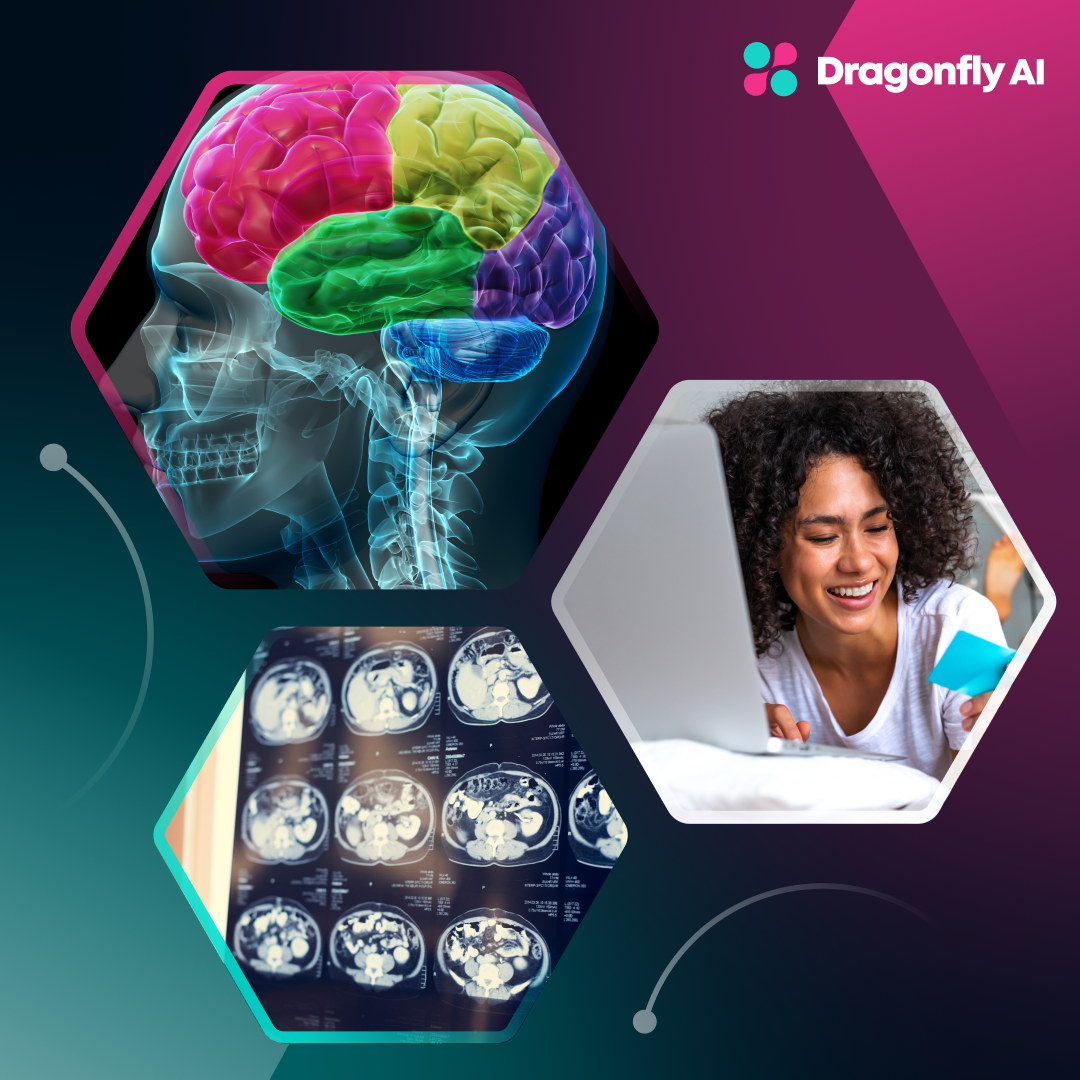In the competitive world of Consumer Packaged Goods (CPG), understanding consumer behavior goes beyond mere transactions. Consumers' emotional responses add an extra layer of complexity and play a pivotal role when it comes to making decisions. Emotional decision making impacts transactions, brand loyalty, and customer retention.
CPG brands that make an emotional connection with their target audience can make all the difference. According to Harvard Business Review, companies that can successfully develop emotional engagement with their audience are:
-1.png?width=1280&height=700&name=Blog%20image%201%20(5)-1.png)
Companies that do not focus on making emotional bonds with their target consumers, increase their chances of losing out to their competitors, especially if those rivals are mastering creating emotional bonds. Organizations that can build emotional connections with their audience, can beat their competitors by 85% in sales growth.
Now, let’s explore emotional permanence, emotional decision making, and delayed emotional response in the CPG industry, shedding light on how Artificial Intelligence (AI) can be a game-changer for overcoming the challenges brands face when trying to build strong emotional connections with their consumers.
The Importance of Emotional Understanding in CPG
Consumer decisions are not solely driven by rationality; emotions play a significant role in the formation of preferences and choices. Emotional factors influence consumer loyalty, and brand perception, and can make or break the success of CPG products. Developing a strong emotional response can help you connect with your audience on a deeper level.
Real-world Examples of Emotional Impact
You may be thinking, “What is an emotional response?” To highlight the importance of emotional understanding in CPG, consider the example of a consumer choosing a beverage. While rational factors such as price, taste, or ingredients used are undoubtedly important, the emotional attachment to a specific brand—whether it is a tie to childhood memories or a sense of comfort—can significantly influence the final purchase decision.
This type of emotional connection is what CPG brands should strive to capture. An example of a brand that continues to stay ahead of the competition through its effective brand presence and emotional marketing, is Coca-Cola.
Coca-Cola created an ad that was a part of their “Taste the Feeling” campaign that pulls on the relatability and emotional strings of a sibling relationship. Throughout the video, the older brother picks on the younger brother until a group of boys begins to pick on the younger brother and steals his Coca-Cola, which is when the older brother steps in and gets the younger brother’s drink back. This one-minute ad strategically places Coke bottles throughout the video and depicts the bond between siblings well, playing on the emotional story that you can tease your sibling but no one else can.
Emotional Permanence in Consumer Behavior
Brands that kindle an emotional response, like Coca-Cola, are inclined to be more effective and memorable. To begin to see real results in your advertising, branding, and marketing, you must go beyond evoking emotion, by creating emotional permanence with your audience.
What is Emotional Permanence?
Emotional permanence refers to when consumers endure an emotional connection with a brand or product and think about it even when the product is not present or the brand is actively targeting them.
Creating more than a single, emotional response, evolving into a lasting sentiment that influences long-term relationships. For CPG brands, achieving emotional permanence is a strategic goal as it ensures sustained customer loyalty and advocacy.
One way to measure brand permanence is through this exercise: think of an athletic shoe brand, you may think of Nike, Adidas, or New Balance or you can think of a fast food brand and you may think of McDonald’s, Burger King, or Wendy’s - even if they aren’t your favorite, but because they have high brand salience.
Influencing Long-term Consumer Relationships
There are four stages of brand development:
- Identity - “Who are you?” generating brand awareness
- Meaning - “What are you” instilling your brand values and differentiators
- Response - “What about you” creating positive, emotional reactions
- Relationships - “What about you and me?” a developed sense of loyalty and high resonance
Consumers often stick to a particular laundry detergent or snack brand not just for the quality of the product but because of the emotional bond they share with the brand. Emotional permanence acts as a shield against competitive marketing strategies, securing a brand's position in the hearts and minds of consumers.
Emotional Decision Making: A Double-Edged Sword
Navigating Emotional Decision Making
Unfortunately, emotions can be quite unpredictable, which leaves CPG brands at a doubtful advantage. On one hand, there are endless opportunities for brands to create memorable and positive experiences that resonate emotionally with consumers. On the other hand, emotions can be arbitrary and unforeseeable, even with tests and strategic planning, posing challenges for brands aiming to consistently produce positive emotional responses.
Opportunities and Challenges
As previously mentioned, there are numerous advantages including competitive and revenue opportunities that come from creating effective emotional experiences that build strong brand resonance and reputations. Although the opportunities to elicit emotions from consumers are infinite, the challenging part is to do so in a positive way.
Even ads that are claimed to be thoroughly thought out have the potential to flop, and in the worst cases tarnish or damage a brand’s reputation.
An extreme version of this is PepsiCo. The popular beverage brand’s president Brad Jakeman, shared that for a brand like Pepsi, his team needed to create 3x the amount of content in a year and instead of taking 6 months for an ad, they only have 6 hours or 6 days. Following this interview, Pepsi launched an ad that was quickly deemed as tone-deaf which was later pulled down, followed by a formal apology.
Pepsi created the opposite of a positive emotion when they released this ad, the CPG company took a massive hit with their brand value dropping 4% with continued loss in brand strength and value.
That is what makes evoking emotion so difficult – as great as the opportunity is, it is very high risk as negative emotions may also be triggered and the backlash can be detrimental.
The Phenomenon of Delayed Emotional Response
Understanding Delayed Emotional Response
Now, you may be thinking how does one predict and measure the impact of emotions? Which is just as tricky, especially when it comes to a consumer’s delayed emotional response.
Delayed emotional response refers to the time lag between a consumer's interaction with a product or brand and the subsequent emotional reaction. This phenomenon poses an additional hurdle for CPG brands when trying to test and measure the success of their branding or advertising.
It can be inherently difficult to measure delayed emotional response through social media channels where an individual can be mindlessly scrolling and it may take more time for them to react.
AI's Role in Predicting and Responding
This is where data-driven insights become especially useful. AI and machine learning algorithms can analyze historical data, identify patterns, and predict potential emotional responses. By understanding the factors that contribute to delayed emotional reactions, CPG brands can tailor their strategies to proactively address concerns and capitalize on positive sentiments.
AI-Driven Solutions for Emotional Insights
Decoding Emotional Complexity with AI
AI technologies, including machine learning and sentiment analysis, are instrumental in decoding emotional complexity in consumer behavior. Advanced technology can sift through vast amounts of data or work in real time to track subtle shifts in consumer sentiment and identify key emotional triggers.
Machine learning permits emotional analysis in real-time, enabling brands to measure emotional responses across channels, whether it be in live conversations, video streams, or social media posts.
Sentiment analysis takes insights from the customer experience, brand reputation, and real-time customer sentiment to gauge the amount of positivity and negativity projected.
Translating Emotions into Actionable Insights
AI doesn’t just merely recognize emotions; it translates the data around emotion into actionable insights. By understanding the emotional landscape, CPG brands can fine-tune marketing strategies, enhance product development, and craft targeted campaigns that resonate with their audience on a deeper level.
Machine learning and sentiment analysis provide valuable insights to gauge consumer reactions, measuring the level of emotional response and engagement.
Case Studies: AI in Action
Major brands such as Coca-Cola, Johnson and Johnson, and Estee Lauder are leading adopters of AI.
With over 500 products under the Coca-Cola umbrella, Coca-Cola’s Global Director of Digital Innovation - Greg Chambers claimed “AI is the foundation for everything we do” Since Coca-Cola is sold in over 200 countries Coca-Cola, there is a ton of data and AI assists in corroborating their strategies.
Estee Lauder harnesses the power of AI and machine learning through their chatbot to help customers create and follow a personalized beauty regime. This level of personalization helps customers feel strongly connected to the brand as if the products were created especially for them. The popular retailer, Sephora, also takes a personalized shopping experience approach using AI which has raised their conversion rate by 22%.
Pizza Hut used an emotional AI-powered tool and mood detector to recommend dishes based on the customers' facial cues and expressions which was created to boost the customer experience and satisfaction levels.
-1.png?width=1280&height=700&name=Blog%20image%202%20(4)-1.png)
Mars, known primarily for their pet care, uses emotional permanence AI to predict whether animals can develop chronic kidney disease which is used to improve their products and solutions offerings. Any pet owner would feel emotionally inclined to purchase from a brand that cares and is dedicated to creating products that improve their animal’s health.
Strategies and Outcomes
The use of AI has become versatile in addressing emotional complexity. There are even more CPG brands that have deployed campaigns that have provoked positive emotions based on AI suggestions such as personalized recommendations based on emotional preferences or dynamic pricing models that adapt to consumer sentiment.
Implementing AI for Emotional Engagement
For CPG companies looking to embrace AI for emotional engagement, the process begins with understanding their target audience. Implementing AI requires a data-driven approach, where customer interactions, feedback, and sentiments are systematically collected and analyzed.
Overcoming AI Obstacles
While the benefits of AI deciphering emotional complexity and giving insightful recommendations are evident, some brands are hesitant to implement AI due to the amount of effort it would take to integrate an AI tool or they fear their team will not adopt and utilize the tool to get the anticipated ROI.
To prevail over these hurdles, CPG brands must:
- Determine what value they are looking for an AI solution to provide
- Identify if the AI solution is compatible with their current technology stack
- Clearly communicate to users the value the AI solution will provide and the expected outcomes from using this tool to help drive adoption
The Future of AI in Understanding Consumer Emotions
As algorithms learn and advance, the accuracy and capabilities of AI solutions become further enhanced.
CPG brands can use AI to not only predict emotional decision making but stay ahead of changing consumer sentiments.
Encouraging Investment in AI
Technology will continue to evolve, and CPG brands that do not invest in AI are at risk of losing their competitive edge. The ability to understand and respond to consumer emotions in real time will be a key differentiator in the highly competitive CPG landscape.
Get a Deeper Understanding of Your Consumers
Mastering emotional complexity in the CPG industry can attract new customers and strengthen relationships with existing customers. To successfully leverage emotional decision making, brands must be able to:
- Predict and analyze delayed emotional responses
- Strategically develop consumer emotional permanence
- Track emotional reactions and improve strategies
By harnessing the power of AI-driven emotional insights, CPG brands navigate the uncertainty of perceived consumer emotions.
-1.png?width=1280&height=700&name=Blog%20image%203%20(4)-1.png)
Re-emphasizing the Value of AI
The integration of AI into CPG strategies is not a passing trend; it is becoming strategically imperative in the ultra-competitive market. CPG brands that prioritize mastering emotional complexity through AI insights will not only survive but also have the opportunity to thrive by making data-driven decisions with confidence.
Speak to us about having a bigger impact with your audience!


-1.png?width=1280&height=700&name=Blog%20image%201%20(5)-1.png)
-1.png?width=1280&height=700&name=Blog%20image%202%20(4)-1.png)
-1.png?width=1280&height=700&name=Blog%20image%203%20(4)-1.png)
